Tools - Sold antiquities
Archive of sold antiquities
All artefacts sold in our gallery are fully documented in our online archive and database. Being a specialist ancient art dealer, preserving also the more recent history of each and every piece sold in our shop is at our heart. That is particularly useful for artefacts that changed owners in the meantime. Information that may have been lost in the process can be easily restored from our archives. Please do not hesitate to contact us if you need further information about ancient items that have been sold in our gallery. We can help you with reconstructing the history of ownership for those items. All information about our customers will be kept confidential, of course.-
 Late Roman votive mirror
Late Roman votive mirrorExceedingly rare in this state of preservation, including remains of the original glass and reflective lead foil.
Price: on request Roman bronze lock bar shaped as herm
Roman bronze lock bar shaped as hermMassive piece with great patina. From a German private collection, acquired in the early 1980s.
Price: on request Roman bronze lock bar
Roman bronze lock barMassive piece shaped as a herm, with great patina. From a German private collection, acquired in the early 1980s.
Price: on request Roman mirror from Baalbek
Roman mirror from BaalbekThe bronze disc is the base plate of a bronze mirror, that was once attached to a handle and coated with a reflective metal layer. Typical for upper class Roman households during Imperial times.
Price: on request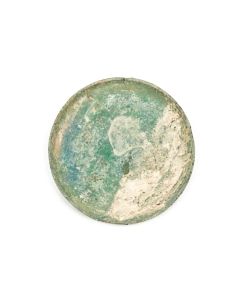 Roman mirror from Baalbek
Roman mirror from BaalbekThe bronze disc is the base plate of a bronze mirror, that was once attached to a handle and coated with a reflective metal layer. Typical for upper class Roman households during Imperial times.
Price: on request Paleolithic hand axe of Homo Erectus
Paleolithic hand axe of Homo ErectusBig hand axe from Niger. Made during the Old Stone Age, around 200,000 years ago. The universal stone age tool could be use as a borer or cutting tool.
Price: on request Small axe head from the New Stone Age
Small axe head from the New Stone AgeCompact stone axe from the 3rd Millenium BC. Found on the Danish island of Moen.
Price: on request Hammer axe of the Single Grave culture
Hammer axe of the Single Grave cultureGorgeous axe head made of polished dark rock. Made by the Single Grave culture and found in northern Germany.
Price: on request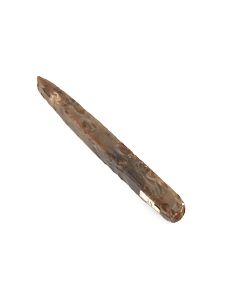 Neolithic chisel from Northern Germany
Neolithic chisel from Northern GermanyElegantly shaped chisel with two polished sides. Made of dark flint. Approx. 3400 to 2400 BC.
Price: on request Neolithic axe head from Luetzow in Northern Germany
Neolithic axe head from Luetzow in Northern GermanyPolished axe made of beautiful brown flint. It was found more than 100 years ago near the town of Luetzow.
Price: on request Dagger blade made of beautiful flint
Dagger blade made of beautiful flintThe finely worked long blade was found in Luetzow in Northern Germany. The artefact was made towards the end of the Neolithic.
Price: on request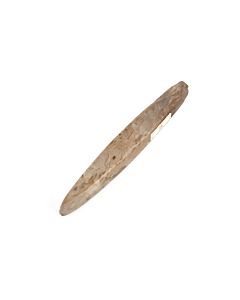 Neolithic chisel from Northern Germany
Neolithic chisel from Northern GermanyElegantly shaped chisel with two polished sides. Made of grey flint. Approx. 3400 to 2400 BC.
Price: on request Neolithic sickle from Northern Germany
Neolithic sickle from Northern GermanyCrescent-shaped blade made of beautiful grey flint. This tool represents an intermediate state within the radical transition from Neolithic to Bronze Age.
Price: on request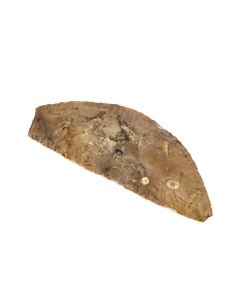 Neolithic sickle from Northern Germany
Neolithic sickle from Northern GermanySmall crescent-shaped blade made of beautiful grey flint. This tool represents an intermediate state within the radical transition from Neolithic to Bronze Age.
Price: on request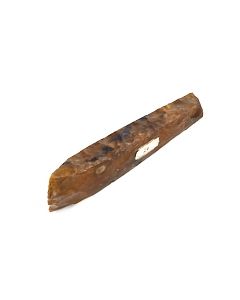 Neolithic axe head from Luetzow in Northern Germany
Neolithic axe head from Luetzow in Northern GermanyNice polished axe from brown flint. It was found more than 100 years ago near the town of Luetzow.
Price: on request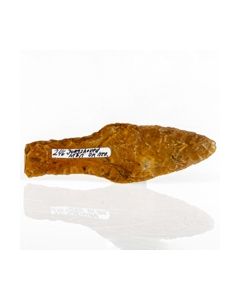 Scandinavian flint dagger
Scandinavian flint daggerNicely worked flint dagger from the transitional period between Late Neolithic and Early Bronze Age. Jungshoved on the Danish Island of Moen was the find spot.
Price: on request Palstave axehead with triangle decoration
Palstave axehead with triangle decorationExtremely well preserved piece from a Bronze Age hoard found in Manston, UK. 1400 to 1150 BC. This axe belongs to a very rare type.
Price: on request Palstave axehead with decoration
Palstave axehead with decorationExtremely well preserved piece from a Bronze Age hoard found in Manston, UK. 1400 to 1150 BC.
Price: on request Neolithic dagger
Neolithic daggerNicely worked flint dagger of type III. Sprove on the Danish Island of Moen was the find spot. 1700 to 1500 BC.
Price: on request Palstave axehead with triangle decoration
Palstave axehead with triangle decorationExtremely well preserved piece from a Bronze Age hoard found in Manston, UK. 1400 to 1150 BC. This axe belongs to a very rare type.
Price: on request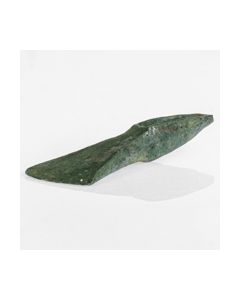 Palstave axehead with decoration
Palstave axehead with decorationExtremely well preserved piece from a Bronze Age hoard found in Manston, UK. 1400 to 1150 BC.
Price: on request Elegant Akkadian axehead
Elegant Akkadian axeheadThe zoomorphic axehead from Mesopotamia is an exceedingly rare variety of the Naram-Sin type. Akkadian Empire, around 2300 BC.
Price: on request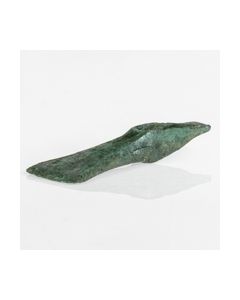 Palstave axehead with decoration
Palstave axehead with decorationExtremely well preserved piece from a Bronze Age hoard found in Manston, UK. 1400 to 1150 BC.
Price: on request Egyptian palette of the Middle Kingdom
Egyptian palette of the Middle KingdomWorkpiece of an artisan for grinding materials. A very similar grinding palette was found in Abydos. From the inventory of the Falmouth Museum.
Price: on request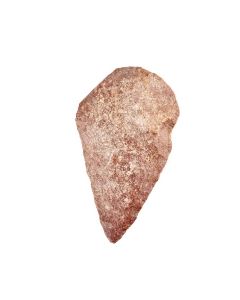 Paleolithic hand axe
Paleolithic hand axeThe universal tool of the older Stone age. It could be used as a borer or a cutter. Approx. 500,000 to 200,000 BC.
Price: on request Axe head from neolithic Northern Europe
Axe head from neolithic Northern EuropeThe object is a trapezoid thick-butted thin bladed axe head dating to the Passage Grave Period to Dagger Period. 3200 to 1950 BC.
Price: on request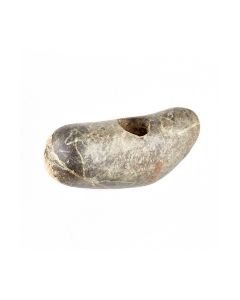 Finely polished hammer axe
Finely polished hammer axeThe compact axe head is made of beautiful and polished green-black stone with white veins. Late Neolithic to Copper Age.
Price: on request Polished stone age axe head
Polished stone age axe headThe small tool from the younger Stone Age has a nicely polished surface revealing the beautiful black stone it is made of. Approx. 4200 to 2400 BC.
Price: on request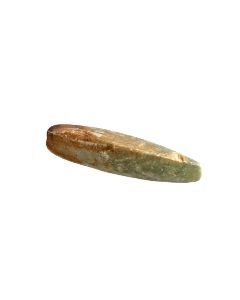 Neolithic chisel of green stone
Neolithic chisel of green stoneThe stone age tool of the younger Funnel beaker culture or Single Grave culture is exceptional because if its material. It is made of beautiful finely polished green stone.
Price: on request Neolithic flint sickle
Neolithic flint sickleHalfmoon shaped blade with fine edges. Nice and typical example for this neolithic type of tool.
Price: on request Bronze Age axe head
Bronze Age axe headVery well preserved axe head. Late Bronze Age, 10th to 9th cent. BC.
Price: on request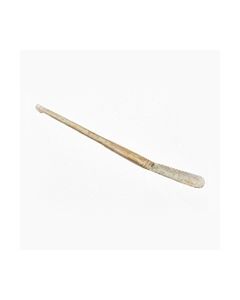 Roman strigilis with workshop mark
Roman strigilis with workshop markExcellently preserved, massive bronze, stable. Workshop mark "N" on the reverse.
Price: on request
 Roman bronze strainer from "Museum fuer Morgenlandfahrer"
Roman bronze strainer from "Museum fuer Morgenlandfahrer"Large piece in very good condition with nice patina. On display in "Ex Oriente Lux" exhibition, published in the corresponding catalogue.
Price: on request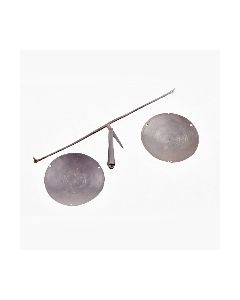 Roman scale balance with pans
Roman scale balance with pansWell preserved small bronze scale. Including two dished pans decorated with incised concentric rings.
Price: on request Bronze Age axe head
Bronze Age axe headVery well preserved axe head. Late Bronze Age, 10th to 9th cent. BC.
Price: on request

